Achieving a lush and thriving garden is every gardener's dream. However, when weeds start encroaching into the areas defined for your vegetables, they can quickly become a problem. Weeds in the garden compete for nutrients, hindering the healthy growth of your vegetables.
It's crucial to choose the right method to eliminate weeds from your garden beds. Vegetables require nutrients, ample water, and growing space, and unwanted weeds demand the same. If left unchecked, these unwanted weeds can absorb essential nutrients, choking out vegetables and plants in the process. Hence, it's essential to kill off the weeds and unwanted vegetation in your garden beds to promote the healthy growth of other plants.
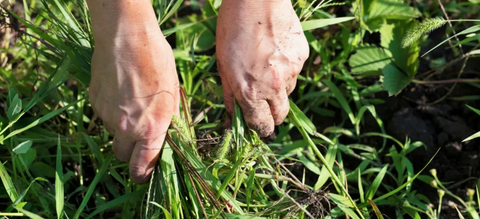
There are various methods you can employ to clear weeds and unwanted vegetation from your garden beds. Typically, labor-intensive processes yield quicker results. While you can opt for methods that require less effort, be prepared to wait at least a season before fully ridding your garden beds of weeds.
We've compiled a list featuring four simple techniques, allowing you to choose based on how much work you're willing to put in and how long you're willing to wait.
1. Smothering Technique:
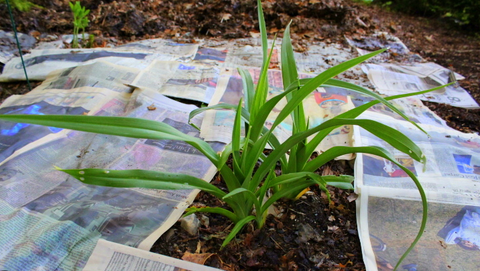
The smothering technique is one of the simplest ways to kill weeds in your garden. We prefer using cardboard for this method, but you can also use multiple layers of newspaper as a substitute.
If you're establishing new garden beds, define them using hoses, ropes, or strings. Clear any debris or rocks you see on the surface and mow the grass down to the ground level.
For areas with extensive weed growth, lay down unwaxed cardboard or up to 10 layers of newspaper. Ensure you use newspapers without colored images. Overlap the boards by 6 inches along the edges in the growing area.
Smother the weeds in your garden beds by laying down overlapping newspaper or cardboard. Cover the cardboard with wood chips. Once done, add a layer of ample compost. Add at least 3 – 4 inches of compost layer to secure the cardboard onto the newspapers.
After a few months, any grass or weeds beneath the cardboard will decompose, returning rich nutrients back to the soil. Effortlessly, you'll have fertile, loose soil ready for planting.
Advantages:
This method is not labor-intensive and leaves organic matter in place. It also doesn't disrupt the soil structure.
Disadvantages:
The smothering method takes several months to work. It's not feasible if you want to plant immediately.
2. Digging Method:
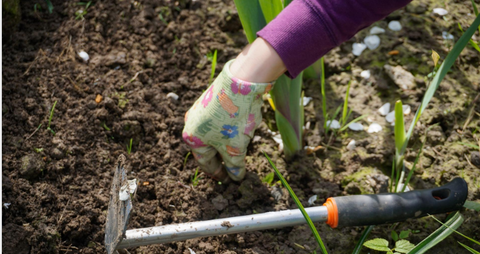
This method is the quickest way to remove weeds from your garden but requires a significant amount of muscle. You can use a fork or a shovel to remove the sod. If the lawn is in good condition, use the sod elsewhere on the lawn.
To make the soil easier to work with, water the designated area a few days before digging. Ensure you limit watering to prevent the ground from becoming soggy. Saturated soil is heavy and difficult to dig. Additionally, it inhibits plant growth.
Cut the sod into strips approximately 1 meter wide and 1 to 2 feet long using a shovel or an edger. Grass density and thickness play a role in determining strip length. Slide the shovel or fork under one of the sod strips by lifting it. Remove the pre-cut sod strips, ensuring any main or fibrous grass roots underneath are cut off.
If there's too much loose soil beneath the sod, use a fork to ensure any excess soil can be moved back onto the surface. Roll up the strips and continue peeling off from the back.
For larger garden beds, use a sod cutter, which can be either manual or gas-powered. You can also rent one. These are plow-like cutters with steel blades, more efficient than shovels or forks.
After the sod is peeled off, remove any rocks, remaining clumps of grass, and substantial roots. Clear any larvae or pests.
The digging process removes organic matter, which should be replaced with compost to promote plant healthy growth. The topsoil should also be replaced, especially if you intend to raise garden beds.
Advantages:
With this method, you can plant vegetables immediately. It's a non-chemical method and doesn't require loud tools.
Disadvantages:
This method is labor-intensive and requires a lot of effort. It removes vegetative cover, exposing the subsoil to weed seeds. It also removes organic matter.
3. Tilling Method:
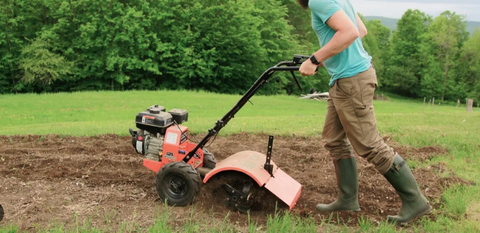
Gardening tools like tillers can be used to cultivate or break up the soil.
When tilling, the original organic material remains in place, unlike when digging up sod.
Prepare the garden area. There shouldn't be any rocks, debris, or trash. Add organic matter onto the sod before tilling the soil.
For previously worked gardens, use a small tiller. For mature lawn grass, use a rear-tine tiller. If necessary, make multiple passes. After tilling the desired area, remove any remaining clumps of grass.
Tilling can propagate some weeds, such as quackgrass and Canada thistle. While you can plant vegetables immediately on tilled soil, it's wise to keep the soil moist and wait a few weeks. This way, you can pull, hoe, or remove weeds as they grow.
Helpful Tip: When using unwieldy large tillers, mark clear boundaries on the garden edge with a shovel to indicate clear boundaries.
Advantages:
With this method, you can plant immediately, and it's less labor-intensive than digging. You can retain organic matter.
Disadvantages:
Using a tiller on rocky or clay-like soil may be challenging. This method can inadvertently propagate some weeds.
4. Using Herbicides:
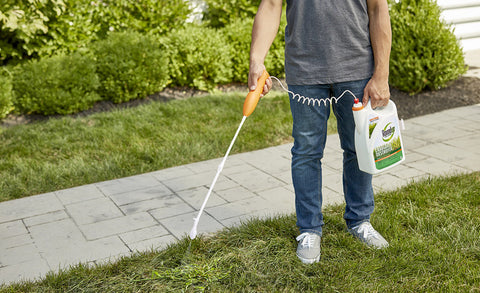
Using the above three methods, you can easily monitor and correct any potential damage to the garden. However, it's not the case when you use herbicides. The use of any chemicals is closely associated with potential adverse effects, which you may later discover.
Be sure to check the label and purchase the appropriate herbicide for killing weeds. Herbicides can only kill grass and not broadleaf plants.
Read the instructions on the package carefully and follow them diligently. Wear protective clothing, gloves, and a mask before using or spraying any herbicide to kill weeds.
Avoid spraying herbicides if rain is expected. Rainwater will wash it into nearby soil and waterways. You should also limit usage on windy days to prevent chemicals from drifting onto neighboring plants.
Depending on the condition of the lawn grass, you may need to use the herbicide multiple times. You must wait a few days for the herbicide to be properly absorbed. Seeds of unaffected weeds and grass may germinate in subsequent rounds; hence, you must be very thorough with your applications.
Using herbicides is a viable option if you have the necessary safety equipment and follow recommended instructions.
Advantages:
For experienced gardeners who have used herbicides before, this method of killing weeds is both quick and direct. Removing or rotating the grass is relatively straightforward when using herbicides.
Disadvantages:
Using herbicides can lead to inadvertent environmental pollution or the killing of nearby plants. It's a method with potential hazards that could result in severe personal harm.
Alternative Methods for Ridding Weeds in the Garden:
While we've discussed in detail the removal of unwanted weeds, several alternative methods can also be helpful if you want to kill weeds on the lawn.
Solarization to Kill Weeds and Weeds:

As the name suggests, solarization uses the energy of the sun to burn off any unwanted weeds and weeds in the garden. Solarization is a chemical-free weed-killing method best suited for the brightest summer months.
Trim the grass short and place transparent or dark plastic waterproof fabric over the designated lawn area. Secure it with rocks or any other suitable heavy weights. Due to the heat from the sun and lack of air, the grass under the plastic will be burnt off.
You must wait for approximately four weeks for your grass to char and start the decomposition process.
Once the grass is charred, you can dig it back up and add other necessary nutrients to plant healthy vegetables.
Since transparent plastic and waterproof fabric are not biodegradable, they must be removed later.
Using Vinegar to Kill Weeds:

Vinegar is highly effective for clearing notorious weeds and killing grass on the lawn that's not needed. Vinegar works by acetic acid, which lowers the pH of plants, eventually killing them.
Ensure to saturate only the area of grass you want to kill to avoid harming other valuable plants.
Mix 32 ounces of apple cider vinegar with 4 ounces of lemon juice and pour the solution into a spray bottle. This mixture works best in hot weather. Spray the vinegar solution liberally on the unwanted grass and weeds until they are completely drenched.
The younger the weed leaves, the quicker vinegar will kill them. For older weeds, you may need to reapply the mixture as needed.
Using Boiling Water to Kill Weeds:
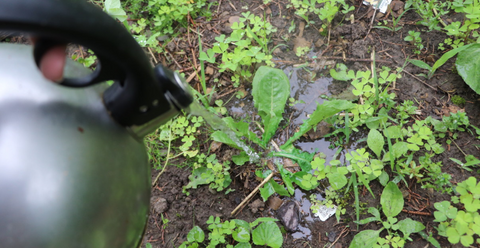
Something as simple as pouring boiling water can help kill grass and allow you to plant in the garden. This method is suitable for smaller areas, as multiple repetitions are required before the grass is entirely dead.
Pour boiling water onto the lawn. Repeat this process until all the grass turns brown and eventually dies. Repeat the application as frequently as possible to ensure all the grass is killed down to the roots.
Using Mulch to Clear Weeds and Weeds:
This is another simple method to get rid of grass and weeds. This straightforward technique requires you to cover the grass and weeds with at least 4 inches of mulching material.
The thick layer of mulch insulates the grass and prevents it from being exposed to sunlight. Lack of sunlight hinders the germination ability of grass seeds.
Remember, using mulch will affect the soil temperature. Inorganic mulching materials like plastic can elevate its temperature, making it suitable for planting seeds or plants. On the other hand, organic mulching materials like mature compost can lower its temperature, making it ideal for planting vegetable plants in the summer heat.
Avoid using sawdust as mulching material as it will strip nitrogen from the soil as it decomposes.
Conclusion:
With the knowledge mentioned above, you can easily clear weeds and unwanted vegetation from your garden beds, getting ready to plant your favorite vegetables. Choosing the right weed-killing method depends on your gardening experience, the availability of necessary materials, and how much effort you're willing to put in.
While some methods like digging and tilling require more work, they also provide immediate results, allowing you to start planting vegetables right away. While smothering requires minimal effort, you'll have to wait for several months before using your garden.









